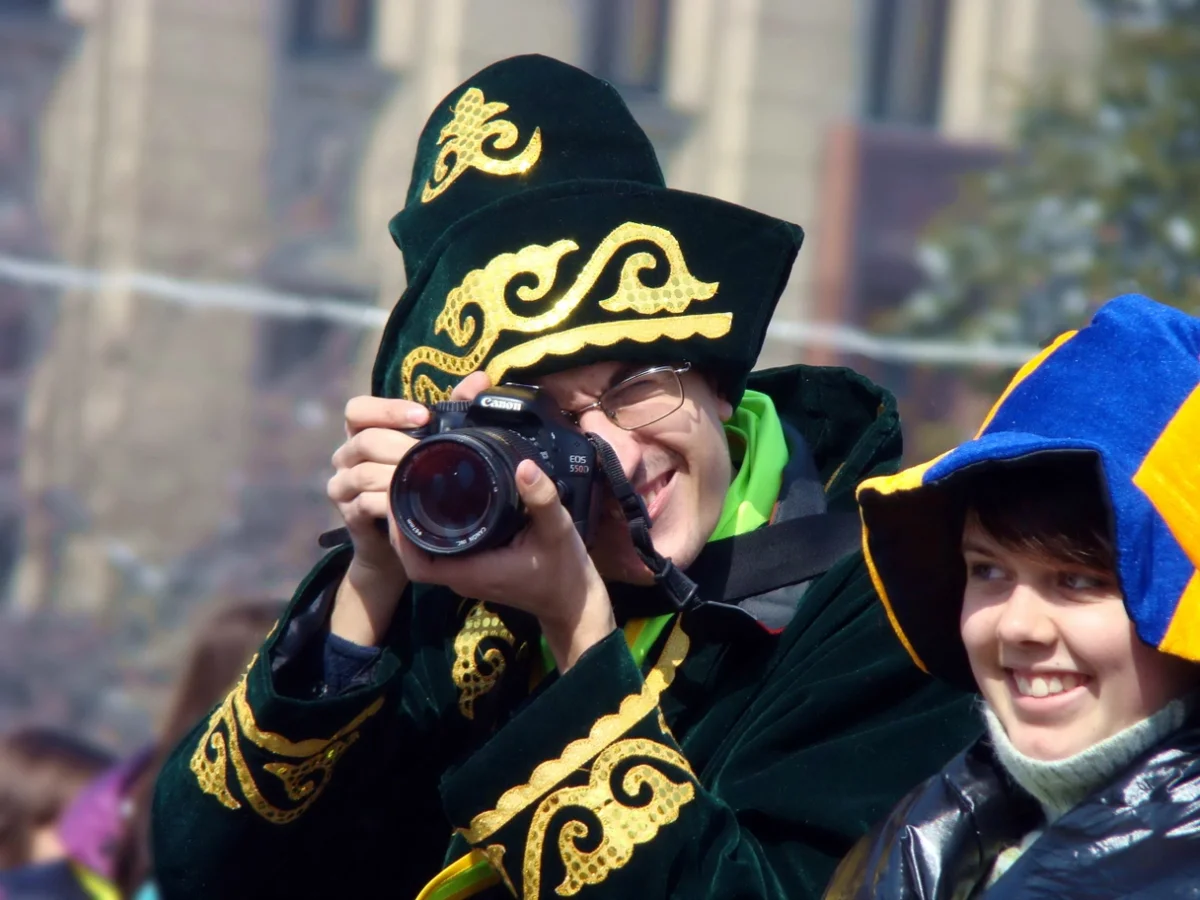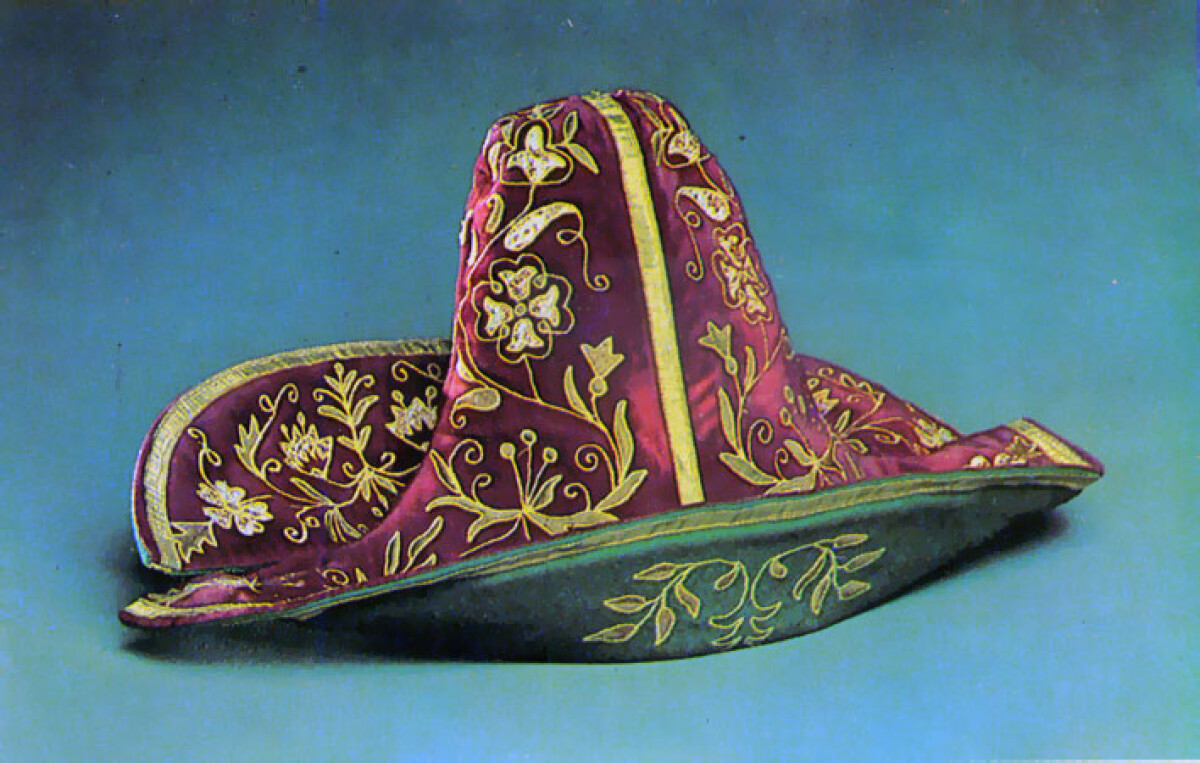
At present, the national costume has become one of inexhaustible sources, in which the material, form, design, decor, technique and method of execution, the traditional technology is the creative idea for creating completely new artistic, design and technological solutions for modern clothing models.
Consumers have increased interest in national clothing, which acts as an ethnic, tribal and territorial indicator, and also carries a semantic component. In this regard, the vector of development of domestic industry is aimed at expanding the range of modern products based on traditional national costume, taking into account its functions, as they directly convey that artistic expression and originality, which for centuries has been embodied by the people in traditional Kazakh costume, based on the culture of the people . Increasingly, the appeal to the rich national heritage is noticeable in the collections of contemporary suits. Along with this, a combination of elements of the traditional costume of different nations, cultures in the style of "eclecticism" is observed in products of modern clothing. At present, the share of production of modern national clothing in the total volume of production has significantly increased, which is confirmed by the creation of specialized small and medium-sized businesses for the production of national clothing.
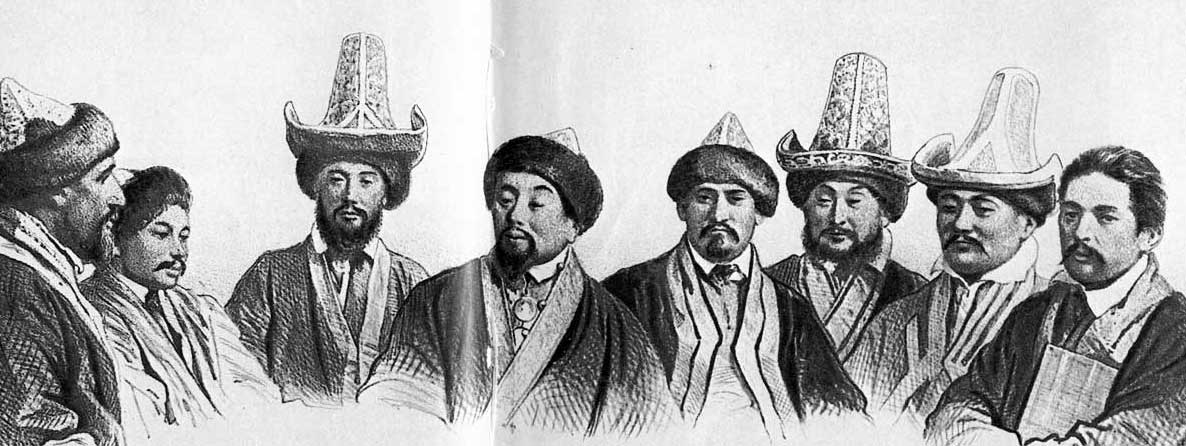
As the analysis of existing methods of designing clothes showed, one of the main directions of expanding the range of clothing at the present stage is the creation of design solutions based on the traditional costume. The main direction of the development of clothing design methodology is the reduction of the production cycle, ranging from the emergence of a creative source to the development of design documentation for a design solution. First in the world practice, historians turned to designing clothes based on traditional national costume, who developed the basic principles for designing modern clothes. Currently, a number of works are performed in the field of designing national clothes and transforming them in the process of designing modern ones.
eadwear in many respects is the most interesting element of the whole complex of national costume. It is in them that its originality and traditional features are most pronounced. The headgear retains the traces of the influence of social and ideological factors to the greatest extent. Researchers of different periods addressed this topic to varying degrees: Jovani Plano Carpini, Guillaume De Rubruk, Fazlallah Ruzbihan, and Seyfi Celebi. However, until the end of the 18th century, no attempts were made to conduct a scientific analysis of the clothes of the Kazakhs, especially the men's headdress.
.jpg)
The universal headdress of the Kazakhs can be considered a skullcap - “taqiya”. It was worn by young and old men, women and even children. The skullcap was put on directly on the head, and on top of it - other headdresses. Sewn "tahiya" from a completely different matter, thick cotton or soft expensive: silk, velvet, cloth, monochrome and even striped. They were made on a woven basis, quilted with the top. To impart hardness, the skullcap was stitched with a frequent stitching or a cardboard or thick paper was laid in the rim and top. The main decoration of the skullcap has long been hand embroidery with patterned lines. Skullcaps of children and young men were embroidered with silk, gold and silver threads, patterns were placed on the dome from four sides - “shugyla” (beam), “gul” (flower). This headdress was widespread. Usually they were made of satin. For elegant skullcaps, velvet was used; they were decorated with colored stitching. The top headgear of the Kazakhs were varied. In the summer they wore a hat with a fur edge - “borik” or a light felt hat - “qalpaq” in the winter they put on hats of special cut - “tymaq”, made of fur.
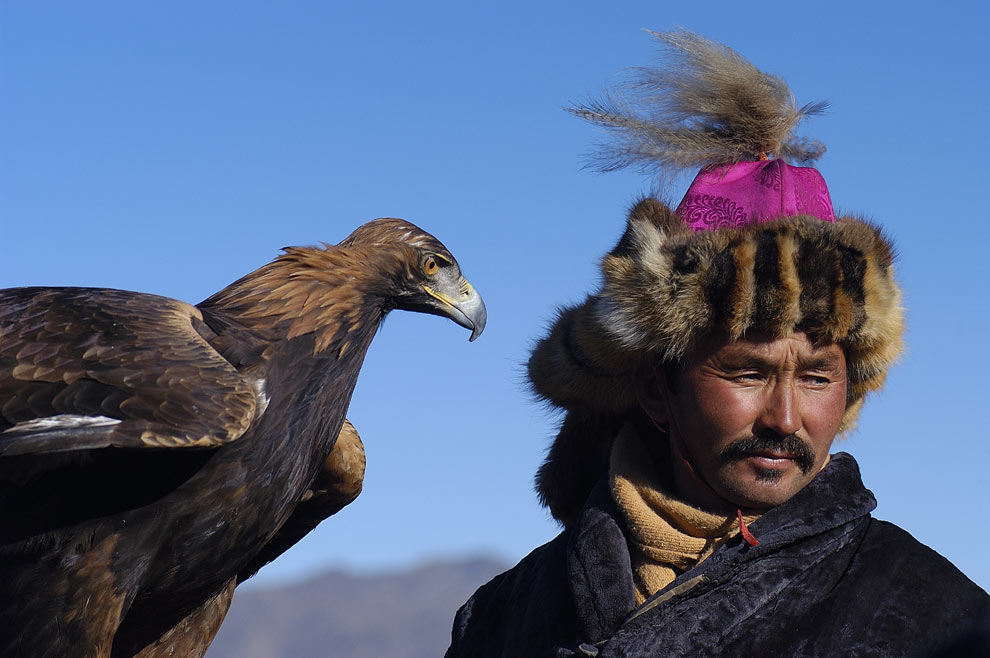
From time immemorial, the attitude towards the headgear of the Kazakhs was very special. Removing a hat from a man’s head was considered an insult, and carelessly throwing something else somewhere is tantamount to renouncing personal happiness and good luck. Always and everywhere, hats were removed carefully, trying to put or hang them on a dais. It was especially zealous to ensure that the hat was not on the floor or on the seat, otherwise it was thought that the health and well-being of its owner could be affected.
Young people wore “zer taqiya” - silk-embroidered skullcaps, gold or silver cantle, the elderly preferred plain-colored on a thin woolen lining. Men's top hats differed variegation and diversity. The most popular among men of all classes was a felt hat qalpaq. It is a summer, lightweight hat made of thin white conical felt, with a narrow high crown and a rounded or pointed crown, which was usually sewn from two completely identical halves. For aristocracy, there was a special kind of qalpaq - aiyr qalpaq, which was a cone-shaped hat with the fields bent to the top. From the inside, as a rule, it was turned back with a thin felt or thick cloth, and outside it was trimmed with a particularly expensive material (velvet/satin). The most valuable was the decor of the abovementioned - a braid of golden thread in the form of plant patterns.
Just as a summer hat was considered borik - a round hat with a fur edge, often trimmed with velvet. For winter, a warm hat - tymaq made of sheepskin, and its children's version of fox fur. In the harsh conditions of the steppe weather, tymaq are irreplaceable and ideal. The cap consists of a crown and four large wedges, tailored from felt and covered with fabric. The back of the head and the Tymak’s earbuds were trimmed with fluffy fur, and wide fields protected the neck and shoulders.
Men's top hats differed variegation and diversity. Of particular popularity among men of all classes was a felt hat - qalpaq. It is a summer, lightweight hat made of thin white conical felt, with a narrow high crown and a rounded or pointed crown, which was usually sewn from two completely identical halves. The lower parts are folded down, forming wide fields. They were sheathed in a strip of black or red matter. Notable people were decorated with hat with silk and cantle, often made from velvet, and the top was decorated with a tassel. Aiyr qalpaq - a high cap with bent to the top of the fields, trimmed from the inside with a thin felt or thick fabric, on the outside is trimmed from a special expensive material. On top of the fabric, patterns in the form of plants are embroidered with golden threads. Basically it was worn at the feasts of the Khans, the sultans.
The ancient form of a headdress from the Kazakhs of the Middle and Younger hordes is the hood. They were sewn from camel's cloth, thick paper fabrics, usually of a dark color, on a lining of light paper material. Bashlyk made of two identical halves, the seam was held longitudinally. The parts were cut out like this: there was a small semicircular protrusion in the front, headphones from the sides, and a rather long semicircular blade stood out from behind. They made them necessarily from black fabric. By the twentieth century, the hood began to fade. In the second half of the nineteenth beginning of the twentieth centuries.
.jpg)
Borik was sewn from four pointed wedges, which were cut out in the form of an elongated narrow trapezium, the top of which had the shape of an isosceles triangle: this cut of the wedge gave the cap a special shape, underlined by a solid felt frame - quadrangular with a square flat top. These hats were much lower, so that the crown clung to the head. Significant local and tribal differences were observed in the headgear cut. Thus, in the form of "Tymak" it was not difficult to recognize the tribal affiliation or its habitat. In argyns, they were a continuous narrow crown, in Naimans, on the contrary, with a wide one, since they were usually put on over another borik hat.
The headgear of Kazakh women, as well as women of many other nations, besides the main purpose, also performed a social function - indicated the marital status of the hostess. In married women, they were somehow different in different clans and clans, but the girls were relatively of the same type throughout Kazakhstan. For the lady, two types of headgear were envisaged: the skullcap and a warm hat with a fur edge. The maiden taqiya was considered the most beautiful of all skullcaps in Kazakhstan. It had a round shape and was very light, the height of the cap was ten or fifteen cm. At the top of taqiya, white owl feathers were sewn like a charm, and the edges were decorated with expensive stones. Such skullcap girls wore until marriage, and already at the wedding there was a whole ritual of farewell to "takiya" - a symbol of childhood. The winter women’s borik or shoshaq borik - trimmed around the otter with fur of otter, fox or beaver, the warm hat was a complete copy of the male one. However, the girlish "borik" was distinguished by the fact that the fur band was always outside, and did not turn away.

However, the most interesting headwear of brides and married women of Kazakhstan are rightly considered. The headdress of the Kazakh bride - saukele is the most beautiful and expensive part of a wedding suit. It is a very high cone-shaped cap, to the very top of which an owl feather was attached, and the frontal part was decorated with jewelry stones: sapphires, pearls, corals. The tall cone of the headdress was embroidered with silver and gold, on both sides, framing the face, whole clusters of precious beads were hung, and a white lace veil was attached to the top, with which the bride usually covered herself during the departure of wedding rituals. The cost of "saukele" has always been very high, they say that in the old days more than a herd of horses was given for it. And a married woman could wear such beauty for no more than a year, only until the birth of her first child. With the birth of a child, she was solemnly presented with kimeshek, which accompanied the woman to the end of her days.
In Kazakhstan, it is increasingly possible to see that the bride and groom at the wedding ceremony are dressed in national costumes. In the wedding dress of the bride, a beautiful and brightly distinguished headdress - saukele - takes a special place. The Kazakh wedding dress of the bride consists of the following details: koylek, saukele, camisole and bile. Saukele deserves special attention. Since no wedding decoration, let it be a wreath or a wedding crown, can not be compared with saukele. At the wedding in Kazakh - only this headdress is so important, because the saukele is the crown of the Kazakh bride.
.jpg)
In the wedding dress of the Kazakhs, a special ritual from the folk tradition - “saukele kigizu” is associated with saukele. Literally dressing saukele. Since saukele in the Kazakh wedding dress is the most important, but also the most expensive element. Saukele means the beginning of a new life of the bride. Dressing a saukele is a ritual of saying goodbye to a bride with a carefree girl's life in the family of her parents. Saukele kigizu passes solemnly and is a significant event. During this ceremony, matchmakers are invited by the groom, they are showered with shashu. For dastarkhan the mullah gives a blessing - bata. Relatives of the groom have to give buygas - a saukele redemption. This may be expensive gifts to the parents of the bride, money or other valuable things. After a saukele is dressed to the bride - the bride is transformed, becomes elegant in a special way. For the fact that guests have the opportunity to see the bride in saukele, they give korimdik - payment in the form of gifts or money.
The most skilled craftsmen were usually engaged in making saukele from the Kazakhs. Zerger jewelers cast, stamped or minted metal parts. As a rule, it took a whole year to make one saukele. Its value reached by the end of XIX - the beginning of the twentieth centuries. a thousand rubles (cost about hundred decent horses), and the high cost, unfortunately, was one of the reasons for reducing their production. It is important to note that, while preserving the basic elements, each saukele has its own characteristics due to the individual nature of the work, the availability of materials and for other reasons. Thus, each headdress is a unique, unique piece of art.
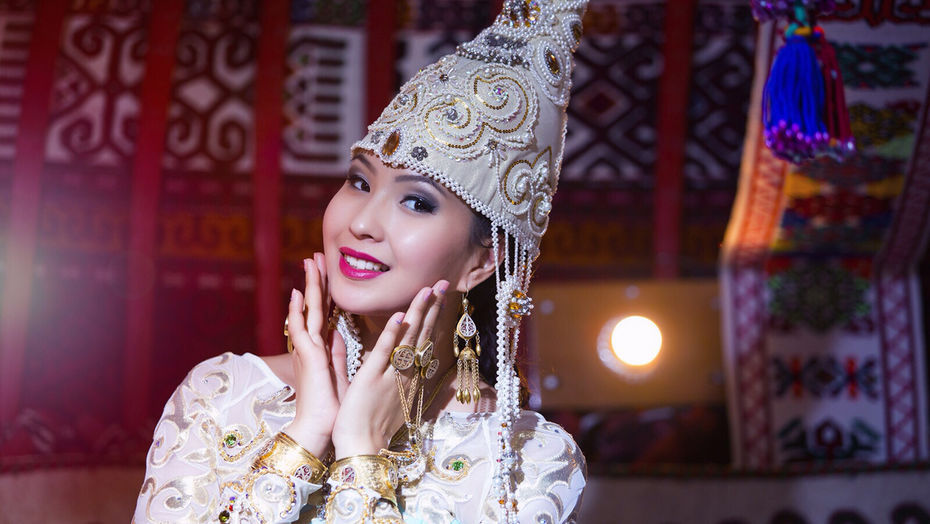
Saukele passed from mother to daughter, from generation to generation. According to custom, the bride was dressed in a wedding dress in the house of her father. Saukele was put on the bride by a respected woman, for which she received an expensive gift from the groom. After the wedding, the young woman wore saukele on solemn occasions for a year, more precisely, before the birth of her first child. They make saukele very carefully from a rigid base, trimmed with expensive fabric, in tune with the bride's wedding dress. They are decorated with saukele stones, sometimes precious - corals, rubies, pearls, emerald. Decorate with abundant decorative beadwork, beads. It was believed that silver has a protective force (in particular, silver pendants in the form of arrows form a whole row of the lower part of the saukele).
The magical function of stones is widely known: coral protects against spoilage and the evil eye, pearls from an eyesworm, carnelian - a symbol of well-being and joy, and so on. The edges of the saukele are turned off with the luxurious fur of animals - mink, sable or fox. The top of the saukele is necessarily decorated with feathers of the owl - uki. This, according to the tradition of the Kazakh people, drives away evil spirits, protects from a bad eye.
Saukele, like all Kazakhs' hats, has a high sacred status. For example, ornamental images, for example, the “sacred tree of life”, “ram horns”, as well as the materials themselves, carry a large sign. Similarly high semantic headgear in the Scythian-Sak-Sarmatian tribes that lived on the territory of Kazakhstan and adjacent lands from ancient times had a similar semantic meaning. For example, a sensational discovery was made in the West Kazakhstan region during the excavations of the Taksai-1 mound with a height of more than one meter - a burial of the so-called “Golden Woman” was found, eighty gold jewelery. A unique thing from the artifacts of the Sarmatian culture is the crest, which has no analogues.
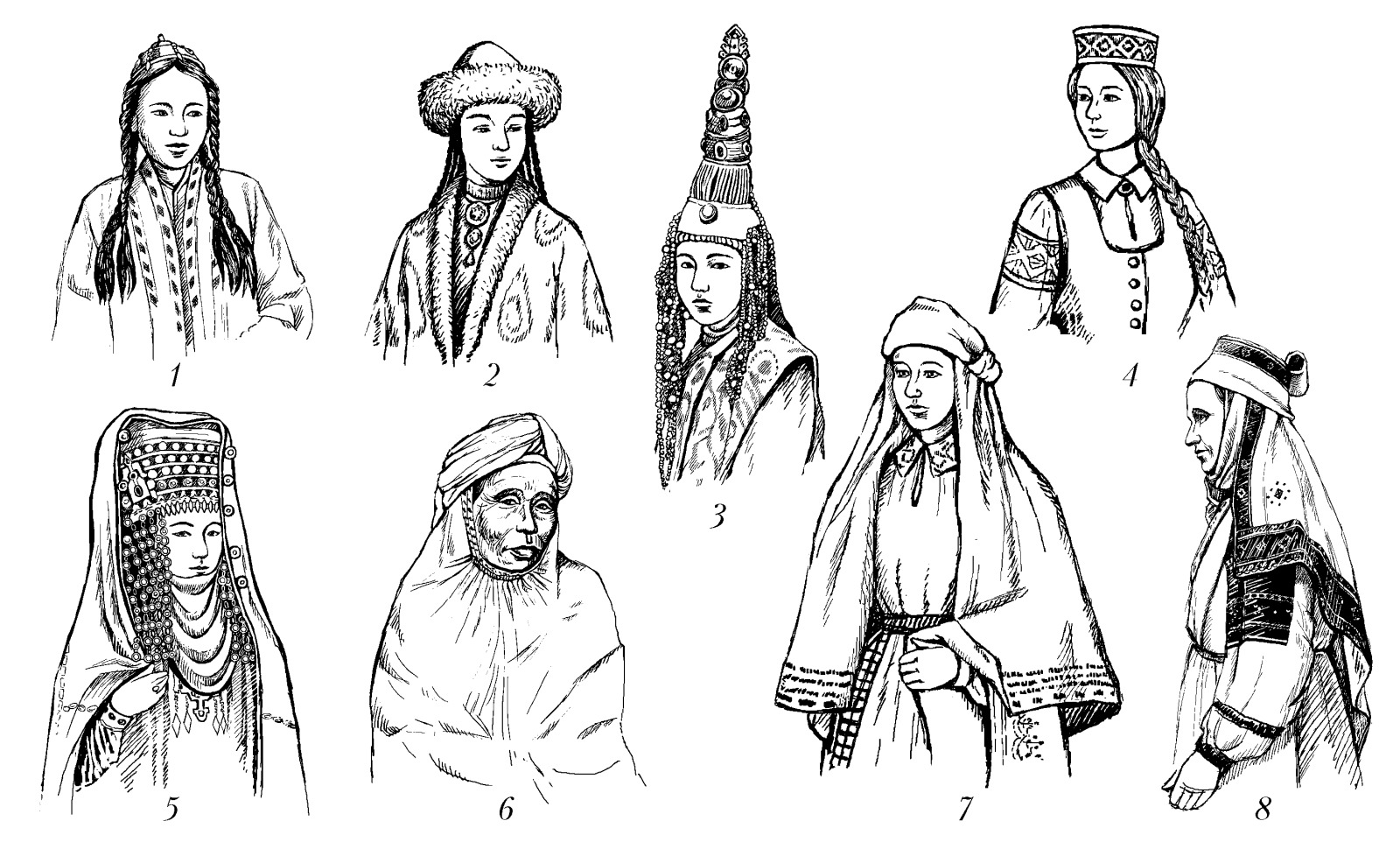
Tomiris, who lived, according to Herodotus, approximately in 570-520. BC, was the queen of the Saka-Massagets, whose habitats coincided with the location of Tigrahaud. The history of Tomiris was reflected in the tradition of Western art. It was depicted by artists Rubens, Allegrini, Luca Ferrari, Mattia Preti, Gustave Moreau and the sculptor Northeast Calzette and Ravenna. But the clothes of the Sak Queen in the interpretation of the Western brilliant masters are very different from reality. The magnificent monument of the Buryat sculptor Dasha Namdakov “Zher-ana” (“Earth-mother”) in Astana, which is the Sak queen Tomiris, standing on a giant bull, is nevertheless close to the image that a number of scientists recreate and which is reflected in the works of a number of remarkable Kazakhstani artists. Of course, there are different details in their images of the Sakan Queen, but there is also a common detail: in almost all the images, the headdress of Tomiris resembles a saukele.
"Kimeshek" - a fitting cap of white cloth, put on the head and covering the neck, shoulders, chest and back. Its front side was usually decorated with satin stitch, beads, pearls, corals, and silver plaques. Embroidered kimishek and along the edges of the neckline. A tall turban made of long white cloth was worn on top of the cap. "Kimeshek" was presented, very widely and everywhere. According to him, like a passport, you can easily determine the age of the woman, the area where she lives and the clan to which she belongs. It was very cruel, but women who could not marry wore a maiden skullcap for the rest of their lives. They simply had no right to wear kimeshek. And every passer-by from a distance saw that there was an unhappy old maid whom no one had ever married.
.jpg)
In the works of Kazakhstani scientists, clothing has been studied in an integrated manner. Also, a detailed study of the Kazakh national costume complex was conducted by Russian historians. The semantics of the Kazakh national costume is considered in its monograph by a number of scientists, the symbolic significance of individual elements of the structure of the Kazakh national costume is also disclosed in the work of other researchers: the semantic features of the Kazakh national costume are revealed, the sign function of its individual elements is revealed. In other works, the ornamentation of the Kazakh arts and crafts in general and the costume in particular is studied.
However, in these studies, the genesis of traditional Kazakh men's hats is insufficiently covered. In addition, it should be noted that units from the number of domestic designers are turning to this topic in their work. At the same time, there is not a single analytical study of the creativity of modern fashion designers, no trends have been identified, and the general direction of development of domestic design has not been determined. In this situation, this study is relevant and will undoubtedly contribute. The sources of research were museum exhibits, pictorial and illustrative material, the works of ethnographers, travelers' notes, archival materials and archaeological research data. Of particular value as sources are ethnographic drawings, photographs made by artists who visited Kazakhstan.
.JPG)
